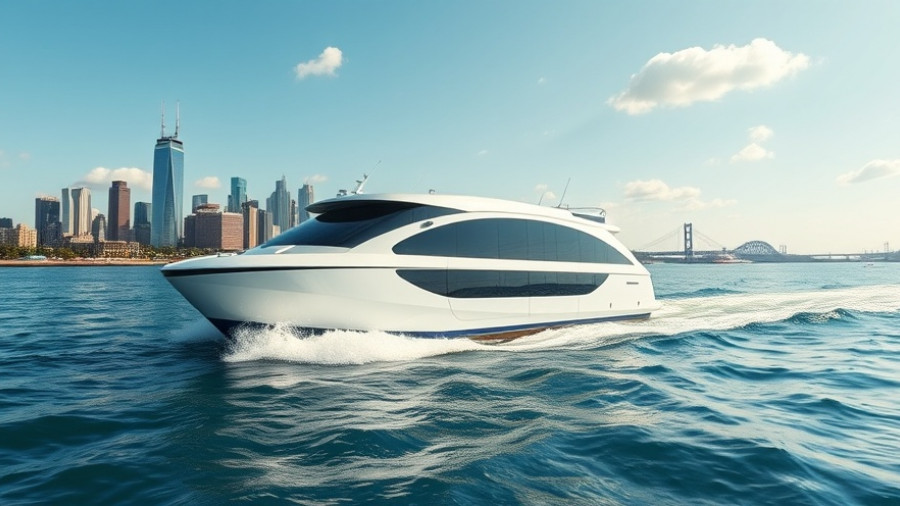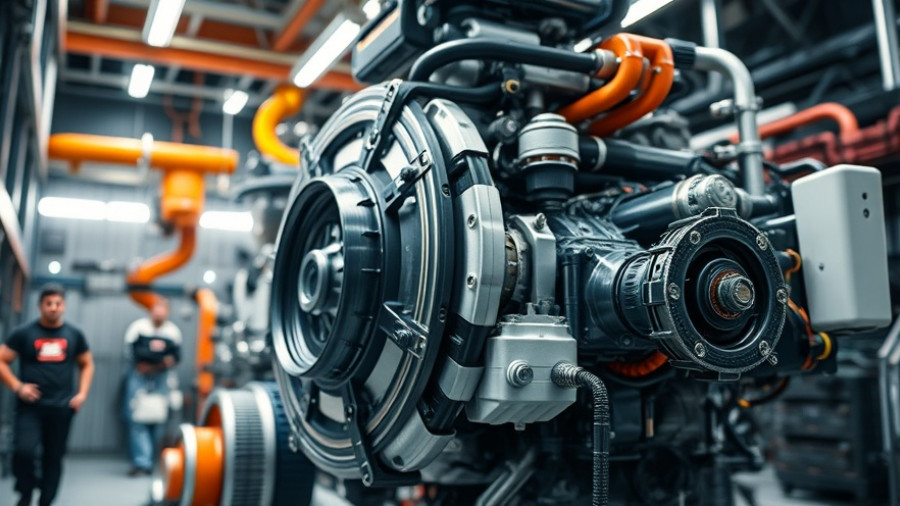
The Revolutionary VS-Drive: A Game Changer for Electric Marine Transport
In an era where sustainability meets innovation, Vessev, a pioneering marine technology firm from New Zealand, has unveiled a groundbreaking propulsion system called the VS-Drive. This podded submersible electric motor is poised to transform the hydrofoiling sector, offering unparalleled performance and reliability for environmentally friendly marine transport. Utilizing advanced active cooling technology and custom direct-drive brushless motors, the VS-Drive is designed not just to meet, but to redefine the standards of electric marine performance.
How the VS-Drive Stands Out
A standout feature of the VS-Drive is its innovative closed-loop cooling system. By keeping operating temperatures below 50°C, this motor overcomes one of the greatest challenges in electric marine propulsion—overheating. Vessev co-founder and CTO Max Olson explains that this technology enables sustained high-torque output, which is essential for efficient operation, particularly in warmer climates. This is a shift from traditional marine propulsion systems, which often struggle under similar conditions.
The VS-Drive connects directly to the propeller, eliminating the need for gearboxes and long driveshafts. This design leads to fewer moving parts compared to internal combustion engines, enhancing efficiency and reducing energy loss. With a continuous output of 65 kW (90 horsepower) at a cruising speed of 25 knots, and the capacity for peak power of 110 kW (150 HP), the motor provides the power needed for high-performance hydrofoiling.
Versatile Applications and Future Expansion
The immediate application of the VS-Drive is seen in Vessev’s VS-9, a nine-meter battery-electric hydrofoiling catamaran. However, the system is designed to scale, with plans for 12 and 18-meter vessels as well as recreational craft. Eric Laakmann, Vessev's CEO, expresses confidence that this propulsion technology will unlock new levels of performance and capability for electric marine transport globally.
Vessev is also open to integrating the VS-Drive into new builds from third-party manufacturers, whether they are hydrofoiling vessels or not, indicating a potential collaborative future for this innovative propulsion system.
The Road Ahead: Government Support in Innovation
The financing of the VS-Drive's development through New Zealand’s Low Emission Transport Fund, administered by the Energy Efficiency and Conservation Authority (EECA), underscores the government's commitment to fostering innovative solutions in the transport sector. With electric marine transport gaining momentum, the support for initiatives like the VS-Drive illustrates a growing recognition of the importance of sustainable transport solutions.
Conclusion: Shaping the Future of Marine Transport
Vessev's VS-Drive is more than just an electric motor; it's a significant leap forward in the maritime industry's commitment to sustainability and efficiency. As we move towards a future dependent on cleaner energy sources, innovations like the VS-Drive could play a pivotal role in creating a more sustainable maritime experience. It’s evident that Vessev's forward-thinking approach combines technological advancement with environmental stewardship, setting a standard for the rest of the industry.
As electric and hybrid-propulsion technologies evolve, operators worldwide could soon benefit from the revolutionary capabilities that systems like the VS-Drive offer. This exciting development is one to watch for those invested in the future of transportation.
 Add Row
Add Row  Add
Add 




Write A Comment